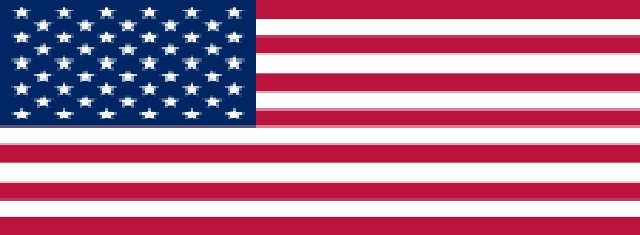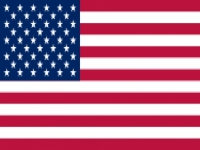Miscellaneous
Key Facts About the Open Skies Treaty entered into force in 2002
By the US Department of State

USA FLAG
Statement made by the U.S. Bureau of Arms Control, Verification, and Compliance on June 6, 2016 regarding Key Facts About the Open Skies Treaty. 5 Key Facts were given with their explanation.
- Key Fact #1 :
The United States flies over Russia more than Russia flies over the United States.
Since the Treaty entered-into-force in 2002, the United States has flown nearly three-times as many flights annually over Russia as Russia flies over the United States. The Open Skies Treaty flight plans (2002 ““ 2016) show 196 bids by the United States over Russia and 71 bids by Russia over the United States.
Further, the United States can request copies of the imagery from other State Parties´ flights over Russia. Since 2002 there have been over 500 such flights by other States Parties over Russia.
- Key Fact #2 :
The Treaty serves as a confidence building tool for all of its 34 States Parties.
The Treaty´s primary value is its role in building transparency and confidence, not intelligence gathering. Observation flights allow States Parties to avoid surprises in a cooperative way. The bilateral and multilateral engagement of military personnel in planning and executing week-long missions is important to building military-military confidence.
- Key Fact #2 :
The Treaty serves as a confidence building tool for all of its 34 States Parties.
The Treaty´s primary value is its role in building transparency and confidence, not intelligence gathering. Observation flights allow States Parties to avoid surprises in a cooperative way. The bilateral and multilateral engagement of military personnel in planning and executing week-long missions is important to building military-military confidence.
The Treaty-mandated coordination that is part of every flight provides a unique opportunity to interact with our Allies and Russia and allows us a first-hand look over Russian territory.
Although the United States has imaging capability outside of the Treaty, there are significant parts of Russia best imaged by Treaty aircraft. The Treaty provides valuable information, especially for our Allies and partners that do not have the same imaging capabilities as the U.S.
- Key Fact #3 :
Although the United States has imaging capability outside of the Treaty, there are significant parts of Russia best imaged by Treaty aircraft. The Treaty provides valuable information, especially for our Allies and partners that do not have the same imaging capabilities as the U.S.
- Key Fact #3 :
The certification process of the digital electro-optical sensor for Russia´s TU-154 Open Skies Observation Aircraft is a detailed, highly technical process.
The Treaty outlines procedures for certification of sensors, including a range of technical steps necessary to ensure that a sensor/aircraft combination complies with the Treaty imagery resolution limits. The Certifying Party must provide highly detailed technical information on the aircraft and performance characteristics of the sensor/aircraft combination.
The Treaty outlines procedures for certification of sensors, including a range of technical steps necessary to ensure that a sensor/aircraft combination complies with the Treaty imagery resolution limits. The Certifying Party must provide highly detailed technical information on the aircraft and performance characteristics of the sensor/aircraft combination.
During certification, the Certifying Party must allow full access to the aircraft and sensor for examination, and must collect imagery data over calibration targets. Parties analyze this data to determine and certify the minimum altitude at which a sensor/aircraft combination may be operated during future observation flights.
- Key Fact #4 :
The resolution of Open Skies imagery is comparable to commercial imagery“”such as Google Earth.
- Key Fact #4 :
The resolution of Open Skies imagery is comparable to commercial imagery“”such as Google Earth.
The Treaty limits all optical sensors, including electro-optical, to 30 centimeter resolution; a level that allows parties to distinguish between a tank and a truck and is of similar resolution to imagery available from commercial sources like Google Earth. However, commercial sources may not have current images of locations of interest to the observing party. The United States and Russia receive identical copies of all imagery obtained during missions, which allows us to verify the images are within Treaty resolution limits. U.S. escorts monitor every Russian mission over the United States to ensure the sensor performance is consistent with what was certified.
- Key Fact #5 :
The United States, Allies and partners are able to image the entirety of Russian territory, including Kaliningrad.
The United States flew over the arctic and far east regions of Russia in April 2016 and the most recent flight over Kaliningrad was by Poland in May 2016. Russia has placed certain altitude restrictions over Moscow; a distance limit of 500 kilometers over Kaliningrad, and refused overflights within10 kilometers of part of its border with Georgia.
The United States, Allies and partners are able to image the entirety of Russian territory, including Kaliningrad.
The United States flew over the arctic and far east regions of Russia in April 2016 and the most recent flight over Kaliningrad was by Poland in May 2016. Russia has placed certain altitude restrictions over Moscow; a distance limit of 500 kilometers over Kaliningrad, and refused overflights within10 kilometers of part of its border with Georgia.
- KEY FACT #6 :
The Open Skies Consultative Commission (OSCC) is the multilateral Treaty body responsible for addressing implementation issues.
Since 2002, the OSCC, a consensus organization, has taken 166 decisions to clarify and improve implementation of the Treaty, including four in 2015 directly related to the use of electro-optical sensors on Open Skies aircraft. The 2016 Compliance Report notes that we continue to have serious compliance concerns with several actions taken by Russia, and these issues continue to be raised with Russia in the OSCC, as well as bilaterally.
Source : US Department of State
Ruby BIRD
http://www.portfolio.uspa24.com/
The Open Skies Consultative Commission (OSCC) is the multilateral Treaty body responsible for addressing implementation issues.
Since 2002, the OSCC, a consensus organization, has taken 166 decisions to clarify and improve implementation of the Treaty, including four in 2015 directly related to the use of electro-optical sensors on Open Skies aircraft. The 2016 Compliance Report notes that we continue to have serious compliance concerns with several actions taken by Russia, and these issues continue to be raised with Russia in the OSCC, as well as bilaterally.
Source : US Department of State
Ruby BIRD
http://www.portfolio.uspa24.com/
Ruby Bird Yasmina Beddou Key Facts The Open Skies Treaty 2002 2016 Russian United States Bureau Of Arms Control Verification And Compliance Bids Flights
Liability for this article lies with the author, who also holds the copyright. Editorial content from USPA may be quoted on other websites as long as the quote comprises no more than 5% of the entire text, is marked as such and the source is named (via hyperlink).






